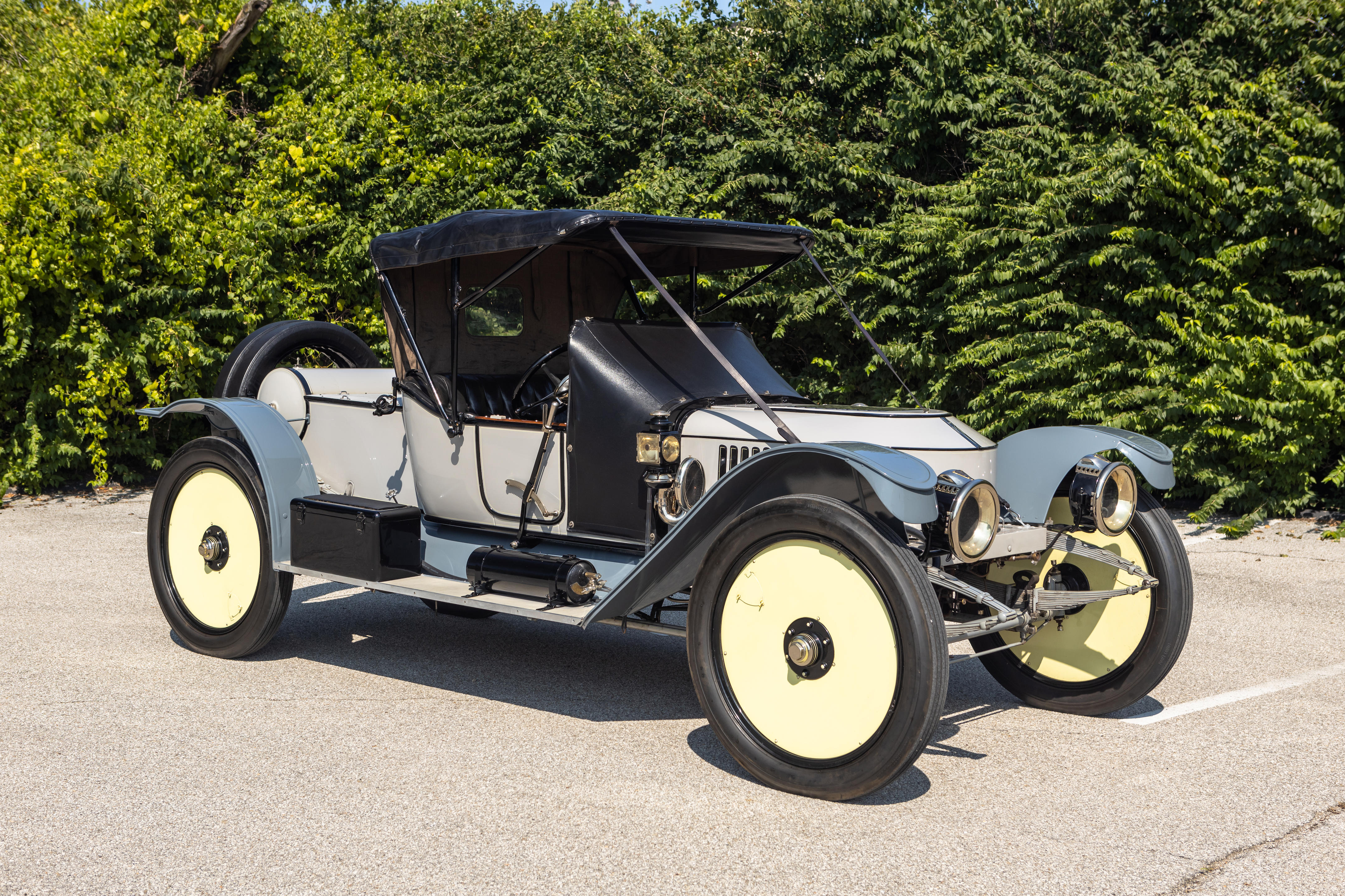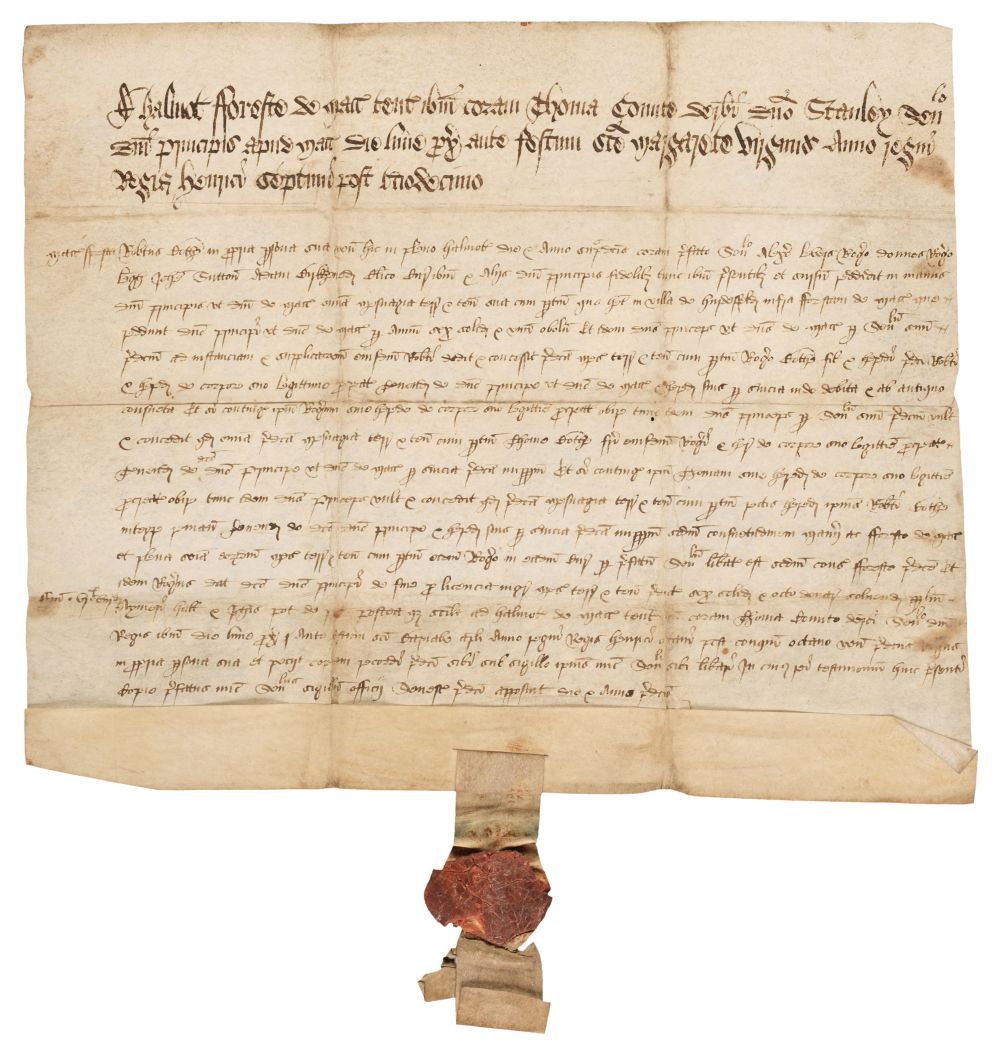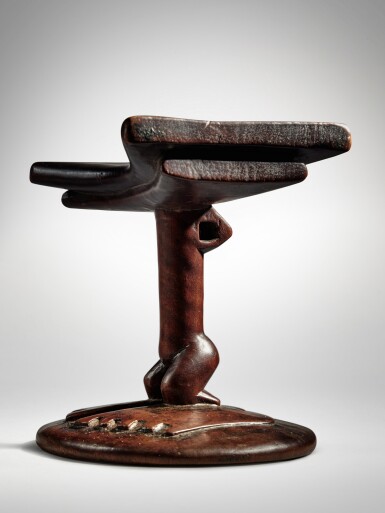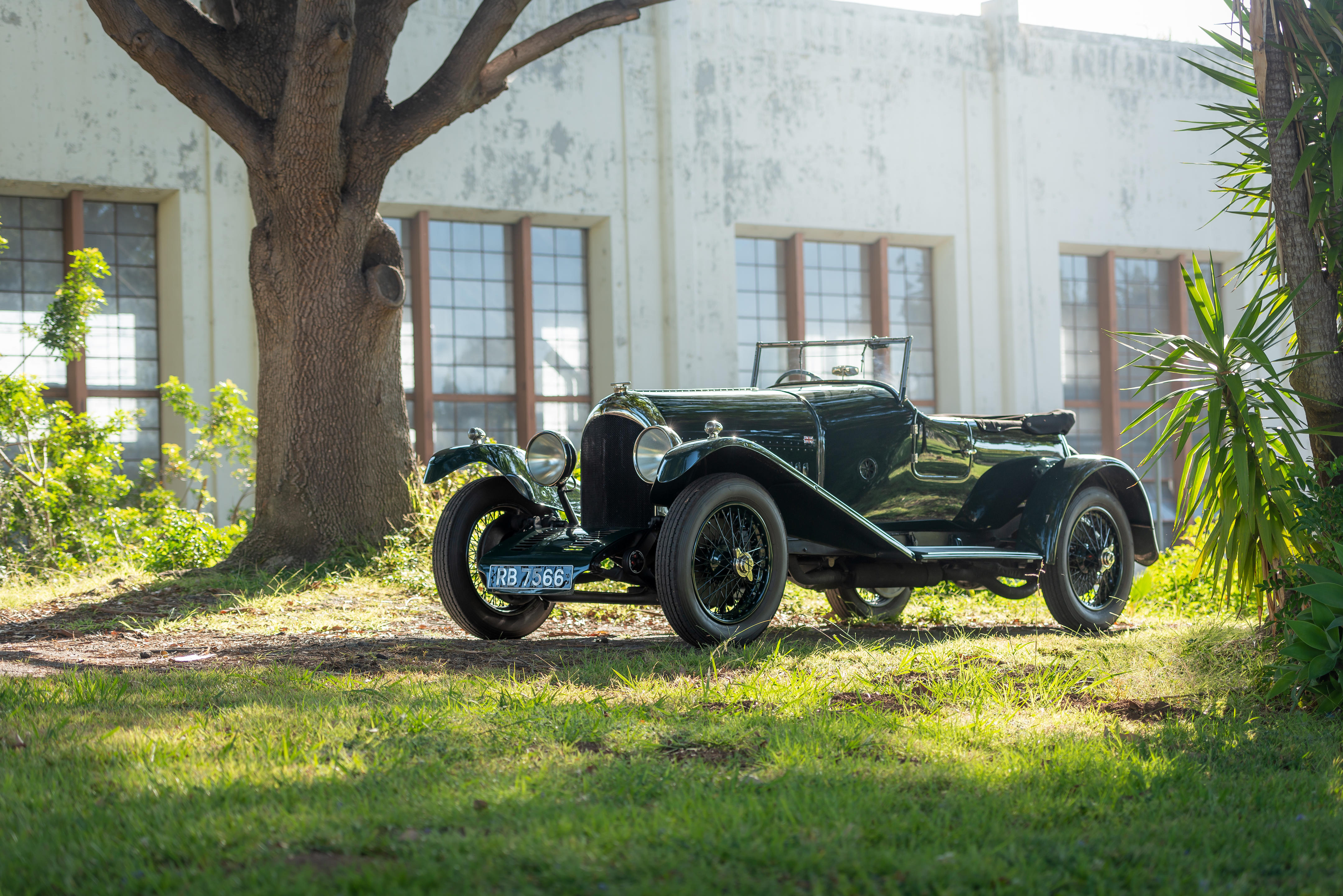The story of F.E. and F.O. Stanley, the ingenious identical twins from Kingfield, Maine, is fairly well known. Having made a small fortune in photographic plates, they turned their talents to automobiles in 1896. But before they had built more than a few cars they sold the business to outside investors. Within a few years they bought the company back at a fraction of the sales price and began production of a completely new model. For decades, however, the design of the first new model has remained a mystery. This car, the missing link in Stanley history, fills in the gaps. By the autumn of 1897 the Stanleys had built their first steam car. Over the next year they built several more, in their dry plate factory at Newton, Massachusetts. In November 1898, they were invited to enter one of their new cars in a "motor carriage contest" at Charles River Park, a bicycle racing track, in nearby Cambridge. Competing against twelve other vehicles, steam, gasoline and electric, the Stanleys' car won the hill-climbing competition, and circling the oval track it covered a mile in two minutes, 11 seconds, by the Stanleys' account setting a world record. The response of the crowd was so enthusiastic that within two weeks they had reportedly received orders for 200 cars and decided to begin manufacturing them. They had hardly begun, however, when a visitor arrived at the Stanleys' plant. "I am John Brisben Walker," he said, "and I have come to buy a half interest in your automobile business." They Stanleys did not wish to sell, so they quoted him what they thought was an astronomical price: $250,000 for the whole business. To their surprise, Walker, publisher of The Cosmopolitan magazine, accepted the deal, although he had yet to raise the money. With the backing of Amzi Lorenzo Barber, "The Asphalt King" who had made millions paving the nation's cities, Walker took over the Stanleys' business, engaging the twins to act as "general managers." The Stanley car became the Locomobile, immediately popular and for a time the best-selling car in America. But Walker and Barber soon took to quarreling, and the Stanleys found they didn't like working for others. By September 1899 they were "rusticating in the Maine woods," according to one account, and waiting out the one-year period during which they had agreed to refrain from the manufacture of steam cars. "During the interval between 1899 and 1901 we were not idle," wrote F.O. Stanley many years later. "We had designed a car far superior to any before made." However, the development of the Stanley car from the time the twins left Locomobile until they marked their formal return to the industry is not well recorded. There was great fanfare in the automotive press in January 1902, when new models were announced, and it is this type of car that is frequently seen today. Abandoning the Locomobile pattern of a transverse front spring, the new car used full-elliptic springs, oriented longitudinally, on all four corners. The wheelbase had grown to 70 inches, and there was a front seat, which allowed carrying two more passengers, their feet resting on a toe-board that doubled as a toolbox cover when closed. The front of the car had a stylish double curve, a feature that was further streamlined in 1903. It falls to this car, then, believed to be the oldest surviving post-Locomobile Stanley, to demonstrate what the brothers were up to in 1900 and 1901. Most noticeable is the upright and concave, single-curve front panel, a characteristic that had vanished by 1902. It has a Crosby steam gauge with the legend "Stanley Brothers," the type used on Locomobiles from 1900. Significantly, it has the early type oil pump, a ratchet design that requires resetting each time the car is filled with water. The Lewiston Journal recorded in August 1901 that "yesterday Mr. Stanley drove a yellow car with black stripes, with the new oil pump and new all-ball-bearing engine..." This, then, was the milestone of the automatic oil p
The story of F.E. and F.O. Stanley, the ingenious identical twins from Kingfield, Maine, is fairly well known. Having made a small fortune in photographic plates, they turned their talents to automobiles in 1896. But before they had built more than a few cars they sold the business to outside investors. Within a few years they bought the company back at a fraction of the sales price and began production of a completely new model. For decades, however, the design of the first new model has remained a mystery. This car, the missing link in Stanley history, fills in the gaps. By the autumn of 1897 the Stanleys had built their first steam car. Over the next year they built several more, in their dry plate factory at Newton, Massachusetts. In November 1898, they were invited to enter one of their new cars in a "motor carriage contest" at Charles River Park, a bicycle racing track, in nearby Cambridge. Competing against twelve other vehicles, steam, gasoline and electric, the Stanleys' car won the hill-climbing competition, and circling the oval track it covered a mile in two minutes, 11 seconds, by the Stanleys' account setting a world record. The response of the crowd was so enthusiastic that within two weeks they had reportedly received orders for 200 cars and decided to begin manufacturing them. They had hardly begun, however, when a visitor arrived at the Stanleys' plant. "I am John Brisben Walker," he said, "and I have come to buy a half interest in your automobile business." They Stanleys did not wish to sell, so they quoted him what they thought was an astronomical price: $250,000 for the whole business. To their surprise, Walker, publisher of The Cosmopolitan magazine, accepted the deal, although he had yet to raise the money. With the backing of Amzi Lorenzo Barber, "The Asphalt King" who had made millions paving the nation's cities, Walker took over the Stanleys' business, engaging the twins to act as "general managers." The Stanley car became the Locomobile, immediately popular and for a time the best-selling car in America. But Walker and Barber soon took to quarreling, and the Stanleys found they didn't like working for others. By September 1899 they were "rusticating in the Maine woods," according to one account, and waiting out the one-year period during which they had agreed to refrain from the manufacture of steam cars. "During the interval between 1899 and 1901 we were not idle," wrote F.O. Stanley many years later. "We had designed a car far superior to any before made." However, the development of the Stanley car from the time the twins left Locomobile until they marked their formal return to the industry is not well recorded. There was great fanfare in the automotive press in January 1902, when new models were announced, and it is this type of car that is frequently seen today. Abandoning the Locomobile pattern of a transverse front spring, the new car used full-elliptic springs, oriented longitudinally, on all four corners. The wheelbase had grown to 70 inches, and there was a front seat, which allowed carrying two more passengers, their feet resting on a toe-board that doubled as a toolbox cover when closed. The front of the car had a stylish double curve, a feature that was further streamlined in 1903. It falls to this car, then, believed to be the oldest surviving post-Locomobile Stanley, to demonstrate what the brothers were up to in 1900 and 1901. Most noticeable is the upright and concave, single-curve front panel, a characteristic that had vanished by 1902. It has a Crosby steam gauge with the legend "Stanley Brothers," the type used on Locomobiles from 1900. Significantly, it has the early type oil pump, a ratchet design that requires resetting each time the car is filled with water. The Lewiston Journal recorded in August 1901 that "yesterday Mr. Stanley drove a yellow car with black stripes, with the new oil pump and new all-ball-bearing engine..." This, then, was the milestone of the automatic oil p















Testen Sie LotSearch und seine Premium-Features 7 Tage - ohne Kosten!
Lassen Sie sich automatisch über neue Objekte in kommenden Auktionen benachrichtigen.
Suchauftrag anlegen